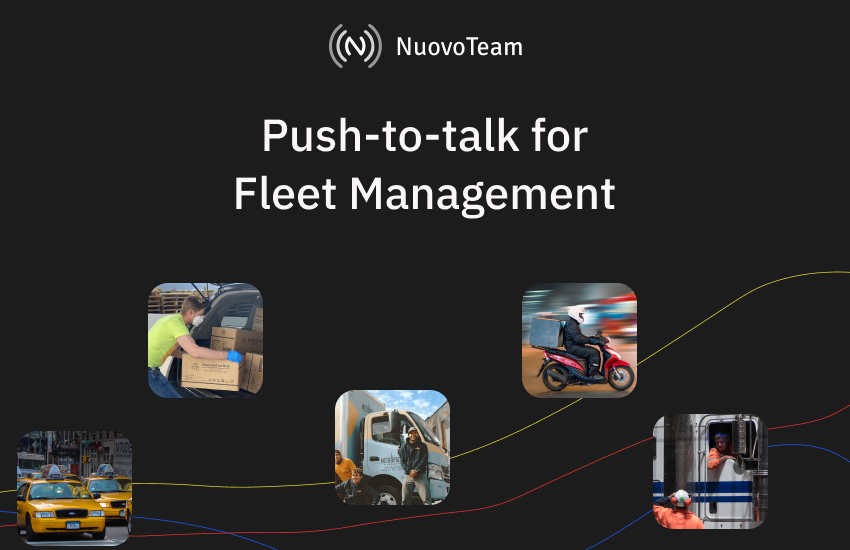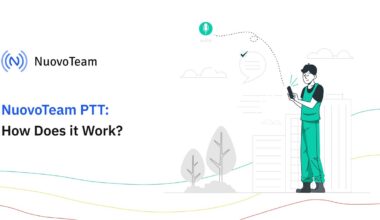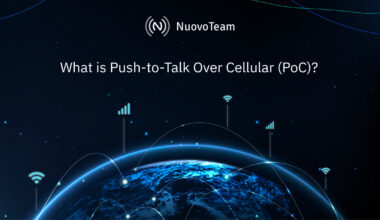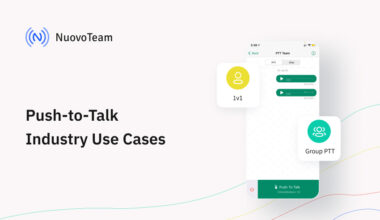Fleet management is the process of keeping all the fleet running on time with maximum efficiency. It involves several players including fleet managers who constantly monitor fleet drivers and various activities involving routing, asset management and much more. Needless to say, fleet management requires flawless communication between managers, drivers, dispatch agents and warehouse workers to ensure on-time deliveries and customer satisfaction. Earlier, fleet drivers relied on two-way radios to communicate with diverse team members. Two-way radios being simple in functionality offer easy push-button connectivity, which enabled fast connectivity to fleet drivers.
However, radio networks are gradually becoming obsolete and with it, radio devices such as walkie-talkies are becoming outdated. This has left fleet management companies to rely on cell phones for their daily communications. But do cellphones offer the same speed and simplicity as walkie-talkie radios?
Fleet drivers are constantly on the move, which means they need to communicate every minor and major detail with their distributed teams. Maintaining efficiency can be really challenging when you are constantly moving between destinations.
What Are the Common Fleet Management Challenges?
1. Decision Making
Your fleet drivers are the bottom line of your company. They are the ones that manually transport your cargo, interact with the middlemen and ensure timely and safe deliveries. With so many responsibilities on their shoulders, drivers are required to stay constantly in touch with their supervisors and team members for informed decision-making. Phone calls are not up to the mark when your driver needs to connect instantly with his line manager to discuss routes, detours and issues.
2. Employee Engagement
Fleet drivers are a part of a deskless workforce that is constantly on the move. Drivers do not have the benefit of discussing issues with their colleagues in person, experiencing cross-functional teamwork or staying up to date about the minute company happenings. Businesses need to take extra efforts to ensure that their drivers are well-informed and engaged at work.
3. Asset Tracking
Modern-day fleet drivers are provisioned with technologies that help them improve their efficiency. Transportation companies provide their drivers with digital devices such as smartphones, walkie-talkies, electronic logging devices (ELDs), etc. While these digital devices play a vital role in enhancing on-road efficiency and connectivity, tracking these devices and gaining visibility of the constantly moving fleets can be a great challenge for managers.
4. Employee Safety
According to a report, 4842 large trucks were involved in fatal crashes in 2020, which is 33% higher than the rate of truck accidents in 2011. Communication, no matter how crucial, can be a source of distraction for drivers. Expecting drivers to dial lengthy phone numbers and engage in long phone conversations, or typing lengthy details over text messages is impractical and hazardous to their lives.

Push-To-Talk Apps: A Safe Way to Communicate While Driving
You can prioritize your drivers’ safety, and yet achieve instant communication with push-to-talk apps. Push-to-talk apps essentially bring walkie-talkie-like capabilities to your smartphone. Which means that your drivers can turn their smartphones into walkie-talkies and leverage ultra-fast push-button connectivity anytime, anywhere.
How is this different from walkie-talkie radios? Here’s how.
1. Sound clarity: Unlike walkie-talkie devices that use radio networks, push-to-talk apps function over cellular networks. Cellular networks provide a superior sound quality in comparison to radio networks.
2. Wider coverage: Unlike radio devices which offer connectivity over a limited area, Push-to-talk over cellular networks offers global connectivity and does not operate on line of sight transmission.
3. Encrypted communication: Radio networks can be easily intercepted making them less secure. When it comes to corporate conversations, it is best to rely on cellular networks that offer encrypted communication.
4. Lesser devices: Your drivers must always be heads-up and as hands-free as possible. Carrying more than one device such as smartphones and walkie-talkies on the voyage and constantly juggling between them poses safety concerns. Push-to-talk apps allow smartphones to be turned into walkie-talkies, which means the drivers need to carry only a single device.
Also read: Various Modes of Field Communication: Why PTT Stands Out?
Nuovoteam Push-to-Talk: Taking Fleet Management to the Next Level
NuovoTeam is a powerful and sophisticated push-to-talk app that helps logistics and transportation businesses stay connected with their fleet drivers while ensuring seamless communication and enhancing driver safety.
Your drivers need not engage in intense training to use the app. It can be easily integrated into Android, iOS, rugged smartphones, as well as custom-built devices and is extremely easy to use.
Know how the NuovoTeam Push-to-talk function works, here.
Here’s why NuovoTeam is the ideal communication platform for your fleet management. Explore the comprehensive capabilities offered by NuovoTeam to keep your workforce connected on the go.
1. 1-1 or 1-many PTT calls
With NuovoTeam, you can connect with a single employee or an entire group with just the press of a button. NuovoTeam Push-to-Talk lets you create public and private channels for privacy-focussed communication.
2. Multi-Media Messaging
Your fleet drivers can go beyond voice communications and share images, videos, files in diverse formats over the air. This allows drivers and line managers, or employees belonging to diverse teams to stay updated with the latest reports and documentation.
3. Location Tracking
Line managers and supervisors working from offices struggle with decreased visibility of their moving fleets. NuovoTeam lets you track your drivers’ locations, define location accuracy, and sampling frequency and analyze route histories.
4. Geofence-Based Clock Ins & Clock Outs
Managers no longer need to conduct frequent calls to check if their drivers have punched in and are on duty. They can view their driver’s working hours by monitoring their attendance on the NuovoTeam dashboard. Managers can also choose to configure geofence-based clock in and clock out for their teams.
5. Corporate Directory Integration
Looking for contact details of employees belonging to diverse verticals can be a time-consuming affair. NuovoTeam lets you integrate your organization’s corporate directory, and sync your phonebook and contact list so that you and your drivers do not have to waste more than a minute looking for contact information.
Closing Lines
Fleet drivers have to maneuver large containers, drive for long taxing hours, navigate through rocky terrains, maintain constant communication with multiple teams and ensure timely deliveries of shipments. They deserve a communication platform that caters to their needs. NuovoTeam PTT fits in perfectly with the complex fleet management needs and enables you to simplify your communication across diverse geographies.







